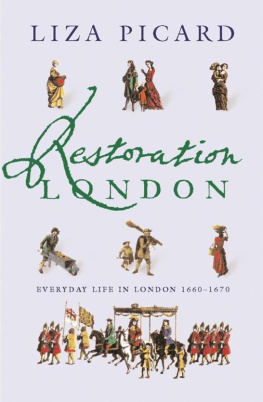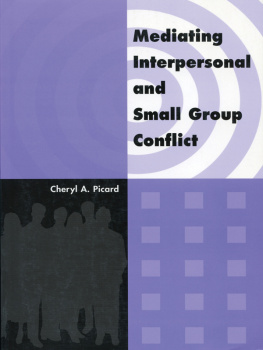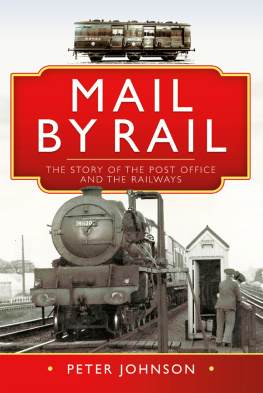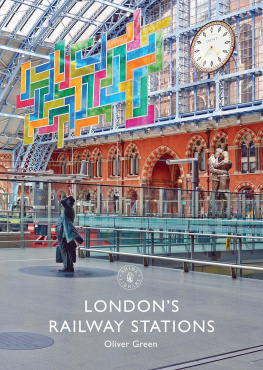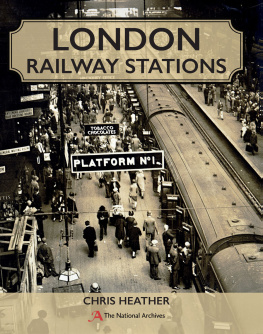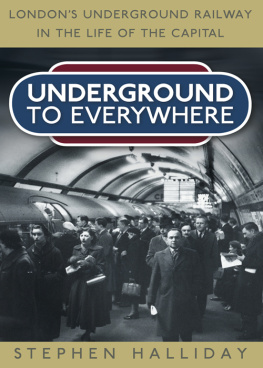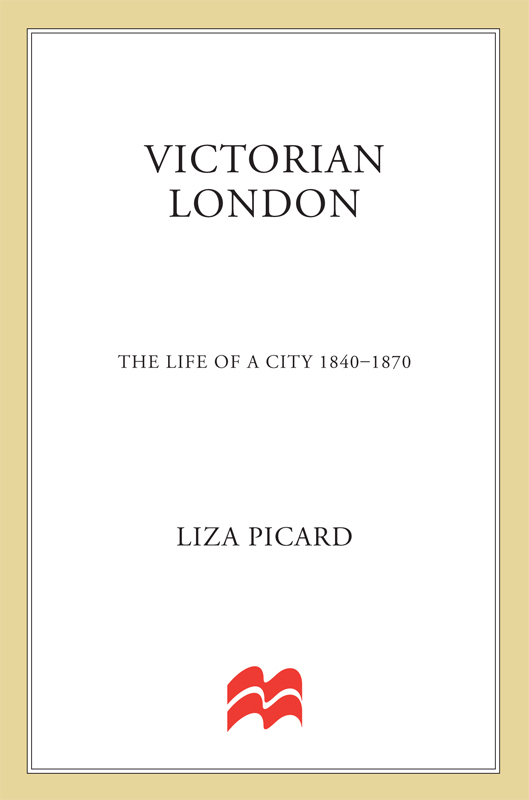
The author and publisher have provided this e-book to you for your personal use only. You may not make this e-book publicly available in any way. Copyright infringement is against the law. If you believe the copy of this e-book you are reading infringes on the authors copyright, please notify the publisher at: us.macmillanusa.com/piracy.
Contents
Cesspits sewers excrement burial grounds coal gas slums Bermondsey water closets the Great Stink Bazalgettes intercepting sewers Abbey Mills pumping station the royal inauguration the salmon
Tides, floods, fogs and frost the Thames Conservators the Watermens Company accidents the husbands boat steam replacing sail and oars the Tea Derby royal occasions a river demo an optimistic acrobat the Boat Race visit of the Great Britain Chinese junks fires the Great Eastern decline of shipbuilding the docks
Maps the street layout medieval survivals cow-houses traffic jams new roads Bazalgettes embankments traffic control obstructions the suburbs road surfaces coaches and cabs omnibuses velocipedes
Speed railway time lines and stations accidents Cooks Tours travelling conditions W. H. Smith the electric telegraph Parliamentary trains railway hotels the underground railway
The slums philanthropic housing George Peabody Angela Burdett Coutts public bathhouses terraced cottages middle-class housing steps and letter boxes baths lavatories earth closets Belgravia Buckingham Palace the Law Courts the Foreign Office Albertopolis the British Museum the Pall Mall clubs the Palace of Westminster
Londons size and population its government contrasting districts the police the fire service water supply gas refuse collection and dust heaps air pollution the postal service
Mayhew the pauper children beggars bone-grubbers, rag-gatherers and pure-collectors mudlarks and others selling goods and services slum dwellings Soyers soup kitchens low lodging-houses the workhouse the monster school the work test
A labourers expenditure costermongers street sellers fast food milk women the knackers yard brewing sugar refining road transport Cubitt the leather industry Christys hat factory shipbuilding holidays trade unions Friendly Societies Samuel Smiles
Who were they? clerks the Post Office the Bank of England private banks cashing a cheque the professions moving out of central London how to be a lady gentlemens clubs marriage good causes the Income Tax Jane Carlyles tax appeal
Florence Nightingale Lady Frederick Cavendish the Army the purchase system the Guards the Season a royal ball Alberts unpopularity his relations with Victoria money Victoria effect of Alberts death
Slaveys Hannah Culwick cleaning other housework Hannahs Christmas Jane Carlyle and bedbugs the household wash maids dresses menservants William Tayler servants register offices pay written references false eyes savings
Poor cottages a schoolteachers house the better-off bedroom furniture drawing-room furniture Jacobethan Gothic Louis XIV wallpapers William Morris curtains Wardian cases floor coverings knick-knacks daguerreotypes pet birds lighting patinated bronze GARDENS manure pests lawn mowers rockeries hot-houses plant suppliers Loddiges Nursery Loudon fashions in plants the Royal Horticultural Society
The poor the working class the middle class butchers fishmongers grocery stores brand names food adulteration copper pans kitchen design cooking ranges coal and gas cookery books Eliza Acton Mrs Beeton evening dinner coffee eating implements household routine lunch out dinner out Soyers Symposium
The very poor working men smock frocks second-hand clothes Moses and Son top hats mens coats trousers shirts smoking-jackets rainwear and umbrellas underwear facial hair baths womens wear the bodice the skirt footwear the crinoline petticoats tight lacing drawers shawls dress-makers sewing machines ready-made clothes paper patterns cosmetics hair children
Dentistry medicine class differences workhouse infirmaries general hospitals governors letters specialist hospitals medical schools medical careers nursing Florence Nightingale growth of medical knowledge antisepsis anaesthesia clandestine dissection miracle cures self-medication childhood diseases tuberculosis smallpox cholera the miasma theory Dr Snow and the Broad Street pump the domestic sickroom Mrs Beeton
Rat pits and dog fights penny gaffs theatres music halls the Alhambra the opera musical concerts the pleasure gardens Vauxhall Cremorne public parks Victoria Park Battersea Park the royal parks destitutes and rats Green Park and St Jamess Park Hyde Park Kensington Gardens Regents Park the Zoo Surrey Gardens Kew Wylds Monster Globe museums Buckingham Palace
The right conditions the Chartists the Royal Society of Arts the site the aim of the Exhibition the building the opening tickets refreshments the lavatories the exhibits the statues the Koh-i-noor criminals and revolutionaries the visitors the Queen the Duke of Wellington railway excursions the Penzance pedestrian attendance figures closing day
The move to Sydenham access construction aims to educate the masses the Architectural Courts alcohol and Sunday opening the nude statues Paxtons waterworks the extinct animals popular entertainments music the 1936 fire
The Ragged Schools Quintin Hogg the Ragged School Union the workhouse schools Anglican and Nonconformist schools the monitorial system pupil-teachers Matthew Arnold teacher training colleges the Jews Free School the Masonic schools apprenticeship the City of London School the public schools evening classes the Polytechnic education for girls Mudies Lending Library the London Library the University of London
Employment for the poor for the working class the slop trade female clerks dress-making prostitution in the slums and the West End Flora Tristan on the sins of the aristocracy grandes horizontales the Victorian taste for pornography reformers the middle class governesses an alternative to celibacy marriage for working women for the middle class sex contraception divorce two society cases were they happy?
Thieving some favourite ploys the Manning murder case poisoning trials society scandals sentences prisons Jeremy Benthams Panopticon design Millbank Pentonville the separate system Brixton prison for women transportation the hulks hard labour hangings
The 1851 religious census absentees the working class Anglicanism the Broad Church Newmans Oxford Movement the Anglo-Catholics St Albans Church Queen Victoria, Days of Fast, and Days of Humiliation and Prayer the Low Church building new churches Roman Catholicism Nonconformist sects Spurgeon the Quakers Spiritualism the Jews
In a poor family crowded churchyards Kensal Green cemetery the Duke of Sussex a tourist sight vaults and catacombs other privately owned cemeteries Highgate Brompton Abney Park others the 1852 Metropolitan Burial Act local authority cemeteries coffins mourning clothes public mourning Shillibeers patent hearse funeral processions the Duke of Wellington
Appendices
Preface
Isabella Beeton began her Book of Household Management : I must frankly own, that if I had known, beforehand, that this book would have cost me the labour which it has, I should never have been courageous enough to commence it. Give or take a few commas, I feel much the same. Yet it has been fun, uncovering the real Victorians, or trying to. So much was written about them in their own time, and so much has been written since. Where to draw the line? What kind of line, come to that? Journalists make their living through vivid reportage; just how accurate were the Victorian journalists? Anyway, are we not entitled to adopt their viewpoint, so as to see as their readers saw?


